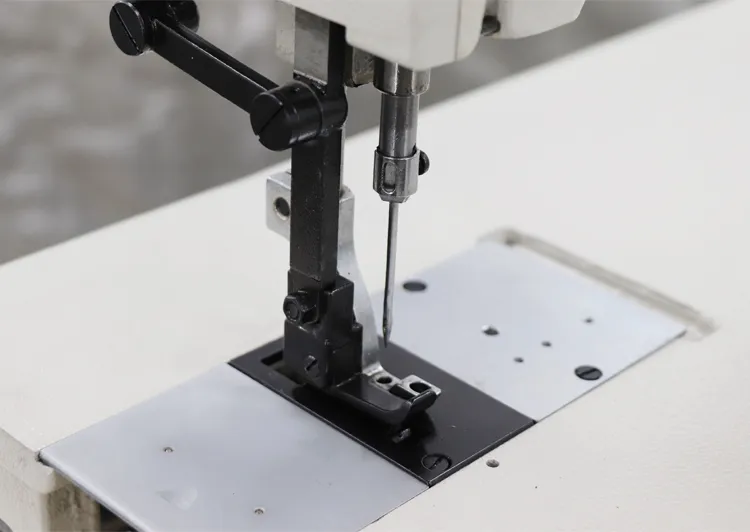Versatile Walking Foot Sewing Machine Ideal for Leather Crafting and Upholstery Projects
Exploring the Walking Foot Machine for Leather A Comprehensive Guide
When it comes to leather crafting, the tools you choose can make a significant difference in the quality of your work. Among the essential tools for any leatherworker is the walking foot sewing machine. This machine is specifically designed to handle the unique challenges posed by thick and heavy materials like leather, making it an indispensable asset for both amateur and professional artisans.
What is a Walking Foot Sewing Machine?
A walking foot sewing machine is characterized by its unique presser foot mechanism, which consists of multiple components that move in a synchronized manner to feed the fabric evenly through the machine. Unlike standard sewing machines, which rely solely on the feed dogs at the bottom, walking foot machines include a top feed mechanism. This allows the top layer of fabric—such as heavy leather—to be moved in perfect harmony with the lower layer, preventing slipping and uneven stitching.
Advantages of Using a Walking Foot Machine for Leather
1. Even Feeding One of the primary benefits of using a walking foot machine is its ability to handle multiple layers of fabric without distortion. When working with leather, it is crucial to maintain even feeding to achieve a consistent stitch line, particularly when joining seams.
2. Stitch Control Walking foot machines allow for better control over stitch length and tension, which is vital when working with leather. Adjusting these parameters correctly ensures that the stitches hold the leather pieces together securely without damaging the material.
3. Robust Construction Machines designed for leather usually feature sturdier build quality. They are equipped with strong motors that can easily penetrate multiple layers of thick leather, making them perfect for projects such as belts, handbags, and wallets.
4. Versatility While these machines are exceptionally proficient when working with leather, they are also versatile enough to handle various other materials, including denim and canvas. This flexibility means that leatherworkers can invest in a single machine that meets multiple needs.
walking foot machine for leather

Tips for Using a Walking Foot Machine with Leather
1. Choose the Right Needle It is essential to select the appropriate needle for sewing leather. Leather needles are specifically designed with a wedge-shaped tip to penetrate the material without causing damage.
2. Use a Walking Foot Some sewing machines may require you to purchase a separate walking foot attachment. Ensure that your machine is equipped with this foot to maximize its leather-sewing potential.
3. Leather-Specific Thread Use polyester or nylon thread for sewing leather. These types of thread have the strength and flexibility necessary for heavy materials, unlike standard cotton thread, which may break under stress.
4. Adjust Tension and Stitch Length Experiment with tension and stitch length settings before starting a significant project. Finding the right balance will help you achieve clean and professional-looking seams.
5. Sewing Speed Beginners should practice on scrap pieces of leather before working on their final project. This will help you get accustomed to the machine's speed and handling, making the sewing process less daunting.
Conclusion
A walking foot sewing machine is an invaluable tool for anyone serious about leather crafting. Its unique feeding mechanism, robust design, and versatility make it an ideal choice for creating high-quality leather goods. By understanding how to utilize this equipment effectively, leatherworkers can elevates their craft, producing durable and aesthetically pleasing items that stand the test of time. Whether you are a seasoned professional or just starting out, investing in a walking foot machine will undoubtedly enhance your leatherworking experience.
-
Leather Sewing Machine: The Industrial Standard for Tough MaterialsNewsJul.18,2025
-
Sail Making Machine: Heavy-Duty Stitching for Industrial and Marine NeedsNewsJul.18,2025
-
Sling Sewing Machine: The Backbone of Heavy-Duty FabricationNewsJul.18,2025
-
Leather Sewing Machine: Precision for Heavy-Duty StitchingNewsJul.18,2025
-
Big Bag Sewing Machine: Powering the Future of Bulk PackagingNewsJul.18,2025
-
FIBC Sewing Machine: Essential Equipment for Bulk Bag ProductionNewsJul.18,2025
-
Heavy Duty Leather Sewing Machine: A Must-Have for Professional LeatherworkNewsMay.28,2025





























